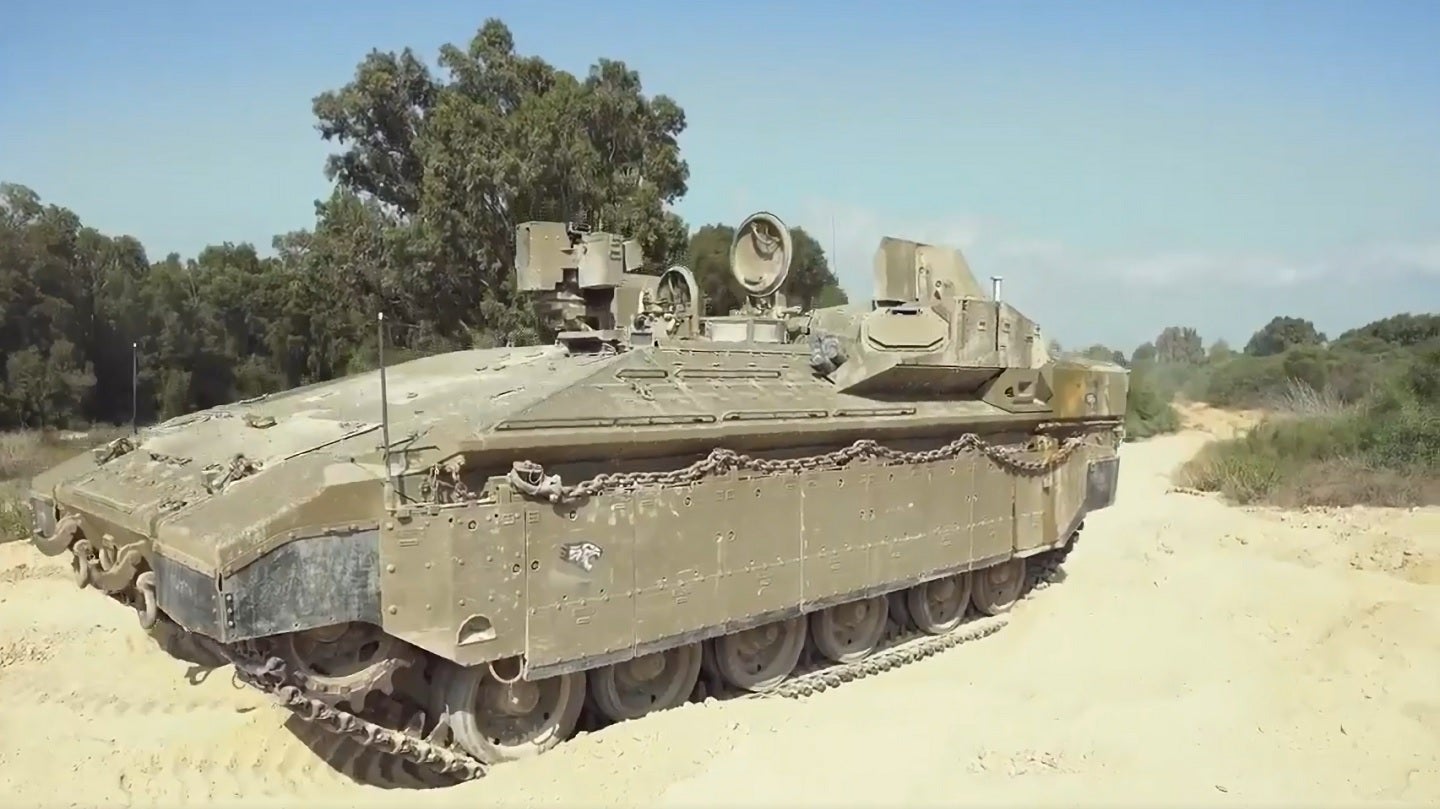
The Israel Defense Forces has taken delivery of the first of the new Namer 1500 armoured personnel carriers, the vehicles being upgraded variants of the existing Namer APC which was first utilised by the IDF in 2008.
Developed by Israel’s Ministry of Defense’s (MoD) Merkava and Armoured Vehicle Directorate, the Namer 1500 bears its name due to a new 1500hp engine, offering an increased power-to-weight ratio and speed compared to earlier models. In addition, the vehicle incorporates touchscreen technologies to improve user efficiency.
It is not known how many Namer 1500 vehicles will be produced for the IDF. However, in February 2023, Israel’s MoD signed an agreement with Oshkosh Defense to produce “hundreds” of the Namer 1500 variant, in a deal worth in excess of £100m, financed by US aid.
The original Namer was derived from the combination of Nagmash, the Israeli variant of M113 APC and Merkava. In 2005, the first prototype of the heavy IFV, called Nemera (Tigress) was revealed. It was developed based on the chassis of the Merkava Mk1 main battle tank (MBT). Field trials and evaluation were conducted for exporting the Nemera. However, no orders were attracted.
Development of the Namer heavyweight vehicle began in July 2007 with the launch of IDF’s armoured infantry fighting vehicle programme. The programme aimed to modernise the IDF’s ground forces throughout the five-year plan.
Namer was revealed to public in early 2008 and went into production in April 2008 with the approval from the IDF chief of staff and IDF funding for the pilot production of 15 tracked vehicles.
The Namer’s design is based on the turret-less Merkava 4 chassis, which has sloped hybrid armour to protect the fighting compartment.
Military vehicle market key for Israel defence spending
Israel’s acquisition of APC is a key element of its forecast land domain spending, according to GlobalData figures. Within the military land vehicle market, which makes up 10.1% of Israel’s forecast defence spending from 2023-2033, the APC segment captures a 71.8% share, with procurement of platforms such as the Namer, as well as the Eitan 8×8 armoured fighting vehicles.
The country’s spending in the military land vehicle market is forecast to rise from $230m in 2023 to $434m in 2033. Israel is surrounded by historical enemies, and as such has seen continued investment into its military.
Although relatively small compared to the size of neighbouring militaries, Israel offsets this by aiming to have a qualitative edge in terms of equipment and personnel.
According to GlobalData’s Israel Defense Market 2023-2028 report Israel’s defence budget inclusive of US aid demonstrated robust growth during the historic period, increasing from $19.3bn in 2019 to $23.6bn in 2023, reflecting a compound annual growth rate (CAGR) of 5.2%.
Over the forecast period, Israeli defence expenditure was anticipated to benefit from an overall improvement in the country’s economy and political stability, which had been absent since 2018, and only somewhat resolved with the 36th government taking office in December 2022. With successive governments failing to reach an understanding with the country’s opposition over the passage of a budget, parliament had failed to pass a budget since 2019.
Although the new Bennet government finally managed to pass the budget in 2022, the coalition government headed by Naftali Bennet collapsed in June of that year, paving way for fresh elections. The election was the fifth elections in a span of just three years, paving the way for Benjamin Netanyahu to return to power.
Against this backdrop, the defence budget inclusive of US aid was anticipated to increase from $24.4bn in 2024 to $27.5bn in 2028, reflecting a CAGR of 3% over the forecast period.







